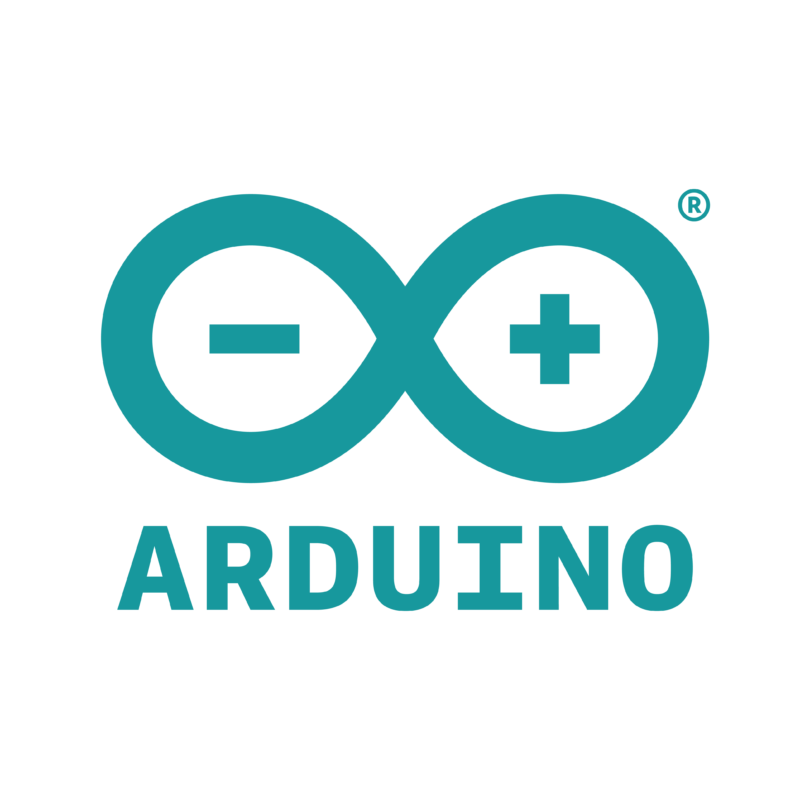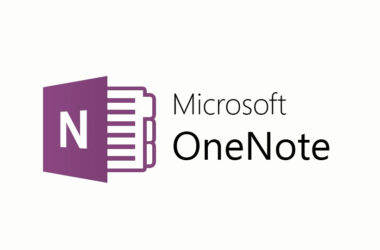Arduino, a name synonymous with DIY electronics, has undeniably paved the way for countless projects, from simple LED displays to complex robotics. However, in the ever-evolving landscape of technology, it’s natural to seek alternatives that might better suit specific needs or offer enhanced capabilities. In this article, we delve into the world of Arduino alternatives, exploring their features, limitations, and why enthusiasts might find themselves in the quest for alternatives.
Arduino Unveiled: Features and Limitations

Arduino’s Versatility
Arduino’s hallmark lies in its versatility. It’s a microcontroller platform that empowers both beginners and seasoned developers to bring their electronic dreams to life. Its ease of use, extensive community support, and a plethora of available libraries make it a go-to choice.
- Versatility: Adaptable to a wide range of projects.
- Community Support: Strong community backing for problem-solving and idea-sharing.
- Ease of Use: Beginner-friendly with a straightforward learning curve.
- Libraries: There is an abundance of libraries for quick and efficient coding.
- Open Source: Open-source nature encourages collaboration and innovation.
Limitations of Arduino
Despite its strengths, Arduino does have limitations. The relatively limited processing power and memory can be constraints for projects demanding more computational prowess. Moreover, its reliance on a specific IDE and programming language might not align with everyone’s preferences.
- Processing Power: Limited computational capabilities for resource-intensive projects.
- Memory Constraints: Restricted memory may pose challenges for large-scale applications.
- IDE Dependency: Tied to a specific Integrated Development Environment.
- Programming Language: Exclusively uses the Arduino programming language.
- Hardware Limitations: Limited hardware options compared to more advanced platforms.
The Need for Arduino Alternatives

As projects grow in complexity, a need arises for Arduino alternatives that break free from Arduino’s constraints. Whether it’s about more processing power, different programming languages, or specialized features, seeking Arduino alternatives becomes a logical step.
1. Enhanced Processing Demands
As technology advances, the demand for processing power increases. Arduino, while excellent for simpler projects, might struggle with applications requiring intricate computations, data processing, or real-time capabilities. Arduino alternatives with superior processing capabilities, such as Raspberry Pi or STM32 Discovery Boards, cater to this growing need. These Arduino alternatives empower developers to embark on projects that demand a higher level of computational prowess, ensuring optimal performance even in resource-intensive scenarios.
2. Diverse Programming Languages
Arduino’s exclusive reliance on its programming language, based on Wiring, can be a limitation for developers accustomed to other programming languages like Python, C++, or JavaScript. The quest for Arduino alternatives is often driven by a desire for flexibility in programming. Platforms like Raspberry Pi, Mbed, or Espruino support a variety of programming languages, providing developers with the freedom to choose a language that aligns with their expertise and project requirements. This ensures a smoother transition for those more comfortable with languages beyond Arduino’s domain.
3. Specialized Features for Unique Projects
Every project has its own set of requirements and challenges. While Arduino offers a wide range of features, certain projects demand specialized capabilities that may not be readily available within the Arduino ecosystem. Arduino alternatives like Particle Photon, Teensy, or BeagleBone bring unique features to the table, allowing developers to tailor their choices based on specific project needs. Whether it’s advanced connectivity options, specialized sensors, or enhanced GPIO capabilities, these Arduino alternatives empower developers to embark on a diverse array of projects with specialized requirements.
4. Breaking Free from IDE Limitations
While Arduino’s Integrated Development Environment (IDE) is user-friendly and effective for many, some developers seek Arduino alternatives that provide a different or customizable development environment. This desire for flexibility in coding environments is driven by a need for more tailored experiences. Platforms like MicroPython, CircuitPython, or Adafruit Feather, with their support for different coding environments, enable developers to break free from the constraints of a single IDE. This allows for a more personalized and efficient coding experience, catering to individual preferences and project demands.
Commonly Used Arduino Alternatives For Diverse Projects

1. Raspberry Pi: The All-in-One Powerhouse
Raspberry Pi, though not a direct Arduino substitute, boasts immense power. It’s a single-board computer that runs a full operating system, making it ideal for projects requiring advanced computational capabilities. With a robust quad-core processor, ample RAM, and support for various programming languages, Raspberry Pi is a versatile choice. Its extensive community and third-party support contribute to its popularity. Whether you’re into multimedia projects, home automation, or robotics, Raspberry Pi offers the flexibility and power needed to bring your ideas to life.
Raspberry Pi’s quad-core ARM Cortex-A72 processor, coupled with its generous RAM, sets it apart for tasks demanding more computational power than Arduino can provide. It runs a variety of operating systems, including Raspbian and Ubuntu, offering a familiar computing environment. This makes it an excellent choice for applications like media centers, servers, or even desktop-like computing experiences. The support for programming languages such as Python, C++, and Java broadens its appeal, allowing developers to choose the language that best suits their project requirements.
2. ESP32: WiFi-Enabled Marvel
ESP32, the successor to ESP8266, caters to the realm of the Internet of Things (IoT). With built-in WiFi and Bluetooth capabilities, it’s perfect for projects demanding seamless connectivity. The ESP32’s dual-core processor provides enhanced processing power, making it suitable for applications that require both computation and communication. Its rich set of GPIO pins further extends its usability, allowing for a wide range of IoT applications, from sensor networks to smart devices.
ESP32’s integration of WiFi and Bluetooth makes it a standout choice for IoT projects requiring wireless communication. Whether you’re designing a smart home system, an environmental monitoring device, or a wearable gadget, the ESP32 provides the necessary connectivity options. Its dual-core Tensilica LX6 processor ensures smooth multitasking, enabling developers to handle complex tasks efficiently. With a plethora of GPIO pins, the ESP32 offers versatility in hardware interfacing, accommodating a broad spectrum of sensor and actuator devices.
3. Particle Photon: Cloud-Connected Innovation
Particle Photon stands out for its cloud connectivity, making it an excellent choice for IoT applications. It simplifies development with its web-based IDE, allowing for easy coding and remote interaction with projects. With support for various communication protocols, including MQTT and Particle Cloud, Photon facilitates seamless connectivity in the IoT ecosystem. Its compact size and reliable performance make it an attractive option for projects that demand real-time data and control over the cloud.
Particle Photon’s cloud-connected capabilities make it a go-to solution for developers focused on IoT applications. The web-based Particle Build IDE streamlines the development process, offering a user-friendly environment for coding and project management. Its integration with Particle Cloud allows for effortless remote monitoring and control, a crucial feature for IoT devices. Developers can leverage protocols like MQTT for efficient communication between devices, creating a robust and interconnected IoT network.
4. STM32 Discovery Boards: Professional-Grade Microcontrollers
STM32 Discovery Boards bring professional-grade microcontrollers into play. With a focus on performance, these boards are suitable for projects demanding higher computational capabilities. The STM32 series offers a diverse range of microcontrollers with varying processing power, memory, and peripherals. The comprehensive development environment, including STM32CubeIDE, simplifies the prototyping and development process, making it an ideal choice for embedded systems, industrial applications, and advanced robotics.
STM32 Discovery Boards cater to developers who require professional-grade microcontrollers with enhanced capabilities. The STM32 series provides a range of options to meet specific project needs, from low-power applications to high-performance computing. The STM32CubeIDE offers an integrated development environment that supports efficient coding, debugging, and testing. Whether you’re working on a medical device, industrial automation, or advanced robotics, STM32 Discovery Boards provide the performance and versatility required for complex projects.
5. Mbed Platform: ARM-Based Excellence
Mbed, an ARM-based platform, supports a range of microcontrollers, offering a powerful and flexible development environment. Its compatibility with ARM architecture ensures efficient performance, making it suitable for a wide variety of projects. Mbed simplifies prototyping with its online compiler and extensive libraries, allowing developers to focus on their applications rather than low-level details. Whether you’re working on wearables, IoT devices, or embedded systems, Mbed provides a solid foundation for innovation.
Mbed’s foundation on ARM architecture makes it a powerhouse for developers seeking performance and flexibility. The online compiler and modular libraries streamline the development process, reducing the time spent on low-level coding intricacies. Mbed supports a diverse range of microcontrollers, allowing developers to choose the hardware that aligns with their project requirements. Whether you’re prototyping a wearable device with sensor integration or developing an energy-efficient IoT solution, Mbed offers the tools and resources needed for a smooth development journey.
6. BeagleBone: Beyond the Basics
BeagleBone, akin to Raspberry Pi, is a single-board computer with enhanced GPIO capabilities. Its design focuses on providing a versatile platform for embedded applications. With multiple GPIO pins, support for various communication interfaces, and the ability to run a full Linux distribution, BeagleBone is well-suited for projects requiring both computational power and hardware interfacing. Whether you’re building a home automation system or experimenting with robotics, BeagleBone offers the flexibility needed for diverse embedded projects.
BeagleBone’s emphasis on GPIO capabilities and Linux compatibility positions it as an advanced solution for embedded systems. The abundance of GPIO pins allows for extensive hardware interfacing, making it suitable for projects involving sensors, actuators, and custom circuits. Running a full Linux distribution expands the possibilities, enabling developers to leverage existing software and tools. BeagleBone’s versatility makes it an excellent choice for applications ranging from DIY electronics to industrial automation, where a combination of computational power and hardware interfacing is paramount.
7. Teensy: Compact and Powerful
Teensy boards, particularly the Teensy 4.x series, offer a compact yet powerful Arduino alternative. With compatibility with the Arduino IDE, these boards are perfect for space-constrained projects where size matters. Despite their compact form factor, Teensy boards pack a punch with their powerful microcontrollers, making them suitable for applications ranging from audio processing to interactive installations. Their flexibility, combined with a supportive community, makes Teensy a popular choice for creative and resource-efficient projects.
Teensy’s compact design and Arduino compatibility make it an attractive choice for projects where space is critical. The Teensy 4.x series, in particular, stands out with its powerful ARM Cortex-M7 processor, enabling high-performance applications. Developers can seamlessly transition from Arduino to Teensy, benefiting from the vast Arduino ecosystem while gaining access to enhanced capabilities. Whether you’re working on audio-related projects, LED displays, or compact robotics, Teensy provides the processing power needed for creative endeavors in a compact footprint.
8. Adafruit Feather: Portable and Stackable
Adafruit Feather boards come with a focus on portability and stackability, providing a versatile platform for various projects. With Arduino compatibility and a range of FeatherWing add-ons, these boards offer flexibility in project design. Whether you’re building a wearable device, a data logger, or a remote sensor node, Adafruit Feather provides a modular and easy-to-use platform. Its compact size and support for multiple communication interfaces make it an attractive option for projects with space constraints.
Adafruit Feather’s emphasis on portability and stackability makes it a convenient choice for projects that demand compact solutions. The Arduino compatibility ensures a familiar development environment, allowing developers to leverage existing skills and libraries. The FeatherWing add-ons further enhance the platform’s versatility, enabling easy expansion for additional features. Whether you’re developing a portable environmental sensor, a GPS tracker, or a compact IoT device, Adafruit Feather offers a flexible and modular foundation for creative exploration.
9. MicroPython and CircuitPython: Python-Powered Innovation
MicroPython and CircuitPython bring the power of Python to microcontrollers, simplifying coding for those familiar with the language. These variants open up the world of microcontroller development to Python enthusiasts, allowing them to leverage their existing skills. With support for a wide range of microcontroller boards, including Adafruit CircuitPython boards, MicroPython and CircuitPython provide an accessible entry point for Python developers looking to venture into the realm of embedded systems, IoT, and robotics.
MicroPython and CircuitPython’s integration of Python into the microcontroller landscape offers a significant advantage for developers comfortable with the language. Python’s syntax simplifies the coding process, making it more accessible for beginners and experienced programmers alike. The support for a variety of microcontroller boards ensures compatibility with diverse projects, from simple sensor applications to complex robotics. Whether you’re a Python enthusiast exploring the world of microcontrollers or a developer seeking efficient and readable code, MicroPython and CircuitPython provide a gateway to innovation.
10. Espruino: JavaScript Magic
Espruino boards come pre-installed with JavaScript, bringing a unique flavor to microcontroller development. Perfect for those who favor JavaScript, Espruino simplifies the coding process with its JavaScript interpreter running directly on the microcontroller. This approach allows for interactive development and real-time testing of code. Whether you’re prototyping IoT devices, creating interactive art installations, or experimenting with web-connected projects, Espruino offers a JavaScript-centric platform that resonates with developers familiar with the language.
Espruino’s integration of JavaScript directly into the microcontroller environment sets it apart for developers with a preference for the language. The onboard JavaScript interpreter enables interactive development, allowing developers to test and modify code in real-time. This approach is particularly advantageous for prototyping IoT devices, where quick iterations are crucial. Whether you’re working on projects involving web connectivity, interactive installations, or JavaScript-driven automation, Espruino provides a unique and accessible platform for creative exploration.
Factors To Consider While Choosing The Perfect Arduino Alternative

Choosing the right Arduino alternative involves careful consideration of various factors. Each project has unique requirements, and finding the perfect match entails evaluating these aspects:
1. Processing Power
When selecting an Arduino alternative, the processing power is a critical factor to ensure it aligns with the demands of your project. Consider the complexity of your application and whether it requires a microcontroller with higher computational capabilities than what Arduino provides. Arduino alternatives like Raspberry Pi, STM32 Discovery Boards, or Teensy offer varying levels of processing power, allowing you to tailor your choice to the specific requirements of your project. Whether you’re running sophisticated algorithms, handling multiple tasks concurrently, or processing large datasets, choosing an Arduino alternative with ample processing power ensures optimal performance.
2. Programming Language
The programming language supported by an Arduino alternative significantly influences the development process. If you are already proficient in a particular language, choosing an alternative that supports it can expedite the coding process and enhance your overall experience. Consider whether the Arduino alternative supports languages such as Python, C++, JavaScript, or others that align with your expertise. For example, MicroPython and CircuitPython cater to Python enthusiasts, while Espruino excels in JavaScript development. By selecting an Arduino alternative that accommodates your preferred programming language, you can leverage your existing skills and streamline the coding journey.
3. Community Support
Community support plays a crucial role in resolving issues, sharing ideas, and accessing valuable resources. A robust community can significantly impact the development experience by providing assistance in problem-solving, offering tutorials, and fostering a collaborative environment. When choosing an Arduino alternative, consider the size and engagement of the community surrounding that platform. Arduino alternatives with active and vibrant communities, such as Raspberry Pi, Mbed, or Particle Photon, ensure that you have a wealth of knowledge and support readily available. This can be particularly beneficial when encountering challenges or seeking inspiration for your projects.
4. Specialized Features
Projects often require specific features beyond the standard offerings of microcontrollers. Consider the unique needs of your application and whether the Arduino alternative provides specialized features that align with those requirements. For example, if your project demands extensive connectivity options, Particle Photon might be a suitable choice with its cloud connectivity and support for various communication protocols. If you need enhanced GPIO capabilities, BeagleBone or Teensy could be more appropriate. Evaluating the specialized features offered by different Arduino alternatives ensures that your chosen platform can effectively meet the specific demands of your project.
5. Development Environment
The development environment significantly impacts the coding experience and overall project workflow. Assess whether the Arduino alternative provides a user-friendly, efficient, and flexible development environment. Some platforms, like Arduino and Raspberry Pi, have well-established and straightforward IDEs that cater to a wide range of users. Others, such as Mbed with its online compiler or Espruino with its JavaScript interpreter, offer unique development environments tailored to specific programming languages or preferences. Choosing an Arduino alternative with a development environment that aligns with your workflow can enhance productivity and streamline the development process.
Conclusion
In the diverse landscape of microcontroller alternatives, the key lies in understanding the unique requirements of your project. Arduino has undoubtedly set the stage, but these Arduino alternatives offer a spectrum of features and capabilities that might align better with your vision. The choice from Raspberry Pi’s computational prowess to Teensy’s compact power is yours. So, venture forth, explore, and let your projects thrive with the perfect Arduino alternative.









